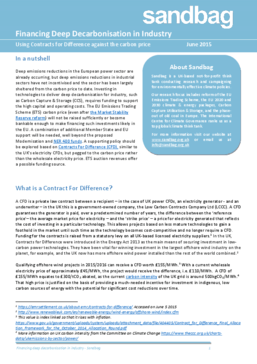Financing Deep Decarbonisation in Industry

To promote CCS and other methods of deep industrial decarbonisation, a combination of additional Member State and EU support will be needed, well beyond the proposed Modernisation and NER 400 funds. A supporting policy should be explored based on Contracts For Difference (CFD), similar to the UK’s electricity CFDs, but pegged to the carbon price rather than the wholesale electricity price. This could fund any technology which permanently stored or abated CO2 emissions.

